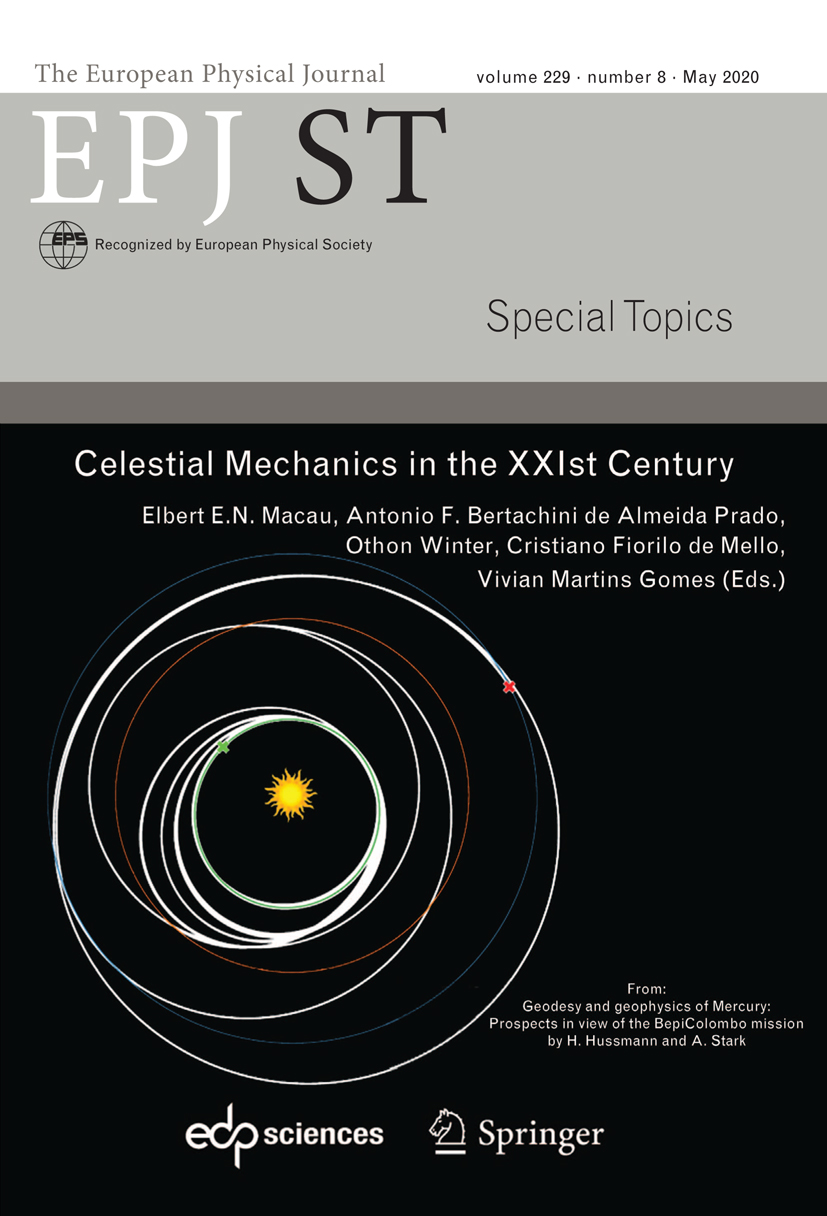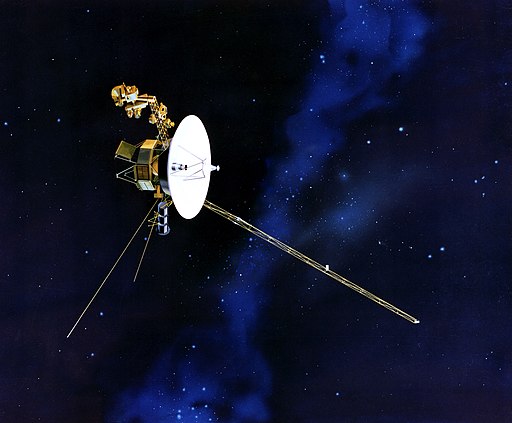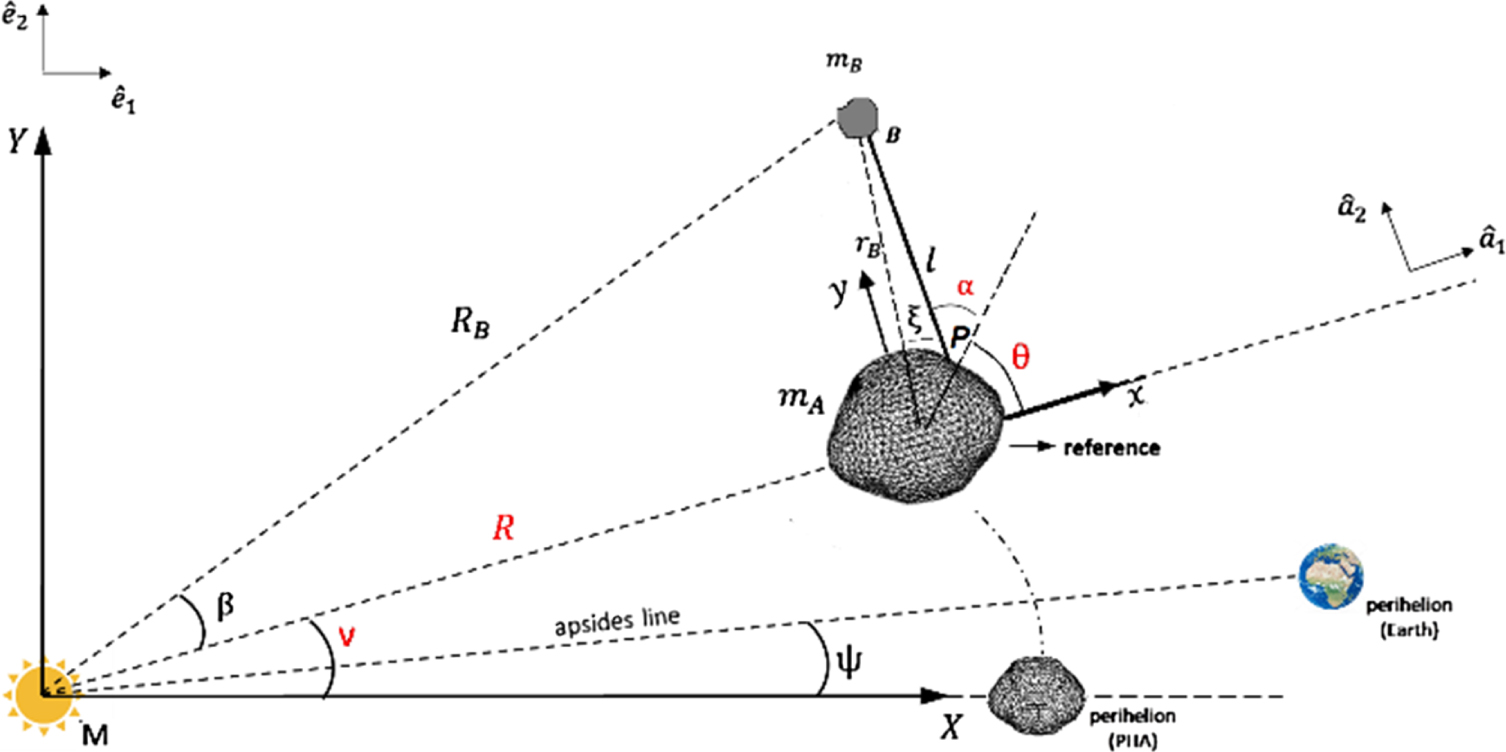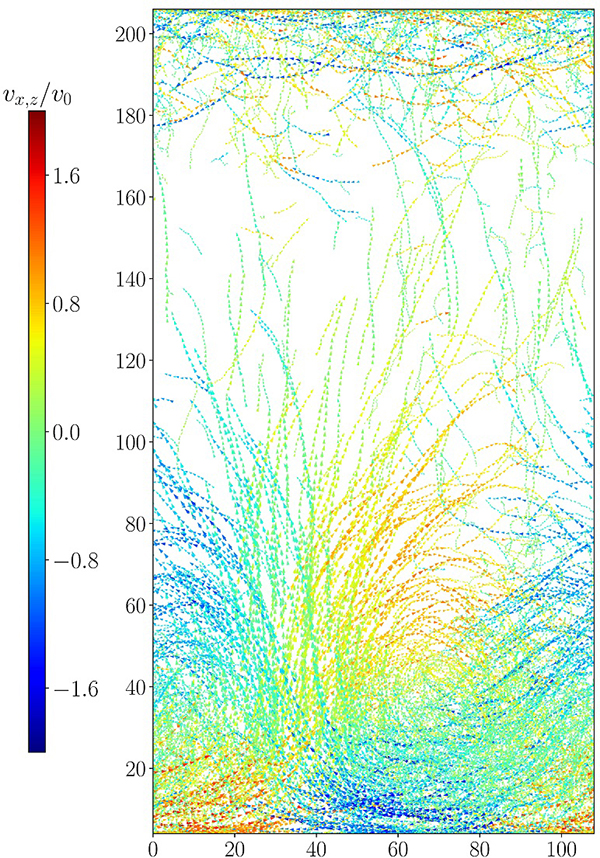News
EPJ D Topical review - Wigner scattering theory for systems held together by Coulombic forces
- Details
- Published on 11 June 2020

Originally developed and formulated for nuclear scattering, Wigner’s theory is extremely general, with application in many branches of physics. Atomic Physics often makes use of an apparently separate formalism (MQDT) which is in fact a specialisation of Wigner’s theory. In a new Topical Review article published in EPJD, Jean-Patrick Connerade (Imperial College London, UK and and European Academy EASAL, France) discusses the relevance of Wigner Scattering theory and in particular its K-matrix formulation for all systems held together by coulombic forces, including not only atoms and molecules but also clusters.
EPJ B Colloquium - Origin of optical bandgap fluctuations in graphene oxide
- Details
- Published on 11 June 2020
Graphene Oxide (GO) is a carbon-based nanomaterial prepared through the chemical oxidation of natural graphite in the presence of strong oxidants. It was identified long before pristine graphene, first reported in the 17th century by Brodie et al. Among many potential applications, GO can be used to produce reduced GO (rGO) for transparent conducting electrodes (TCEs), which has been, for instance, employed in the preparation of organic-light emitting diodes and organic photovoltaic devices. Other works also report the successful use of GO for the preparation of membranes for desalination and water purification, as well as active layers in biosensors, among many other applications. To address the needs of theses versatile applications several modifications in the synthesis of GO have been developed.
EPJ B Highlight - Exploring mass dependence in electron-hole clusters
- Details
- Published on 09 June 2020

New calculations reveal that the behaviours of electron-hole clusters depend strongly on the masses of their particles.
In solid materials, when an electron changes position without another to fill its place, a positively charged ‘hole’ can appear which is attracted to the original electron. In more complex situations, the process can even result in stable clusters of multiple electrons and holes, whose behaviours all depend on each other. Strangely, the masses of each particle inside a cluster can be different to their masses when they are on their own. However, physicists aren’t yet entirely clear how these mass variations can affect the overall properties of clusters in real solids. Through a study published in EPJ B, Alexei Frolov at the University of Western Ontario, Canada, reveals that the behaviour of one type of three-particle cluster displays a distinct relationship with the ratio between the masses of its particles.
EPJ ST Highlight – Introduction to Celestial Mechanics in the XXIst Century
- Details
- Published on 29 May 2020

Space exploration is moving into a new era, the turn of the century has seen past glories fade and the focus of science and research move from one-off achievements and firsts, to the establishment of frameworks that will encourage sustainability. At the same time, the more we learn about space, the more we realise that plans must be put in place to mitigate threats from beyond our own atmosphere. As such, the EPJ Special Topics issue on ‘Celestial Mechanics in the XXIst Century’ reflects this shift in attention by spotlighting research that aims to cement humankind’s place amongst the stars.
Here, we present highlights from this issue where we learn how spacecrafts can get a boost in ‘Aerogravity Assisted’ interactions, how we might reduce the risk of space debris collision, and how a tethered diversion might protect Earth from asteroid impact.
EPJ ST Highlight - Spacecrafts get a boost in ‘Aerogravity Assisted’ interactions
- Details
- Published on 29 May 2020

New research examines the effect of rotation and other variables in the applications of ‘aerogravity assisted’ manoeuvres to obtain an energy boost for space craft.
In a recent paper published in EPJ Special Topics, Jhonathan O. Murcia Piñeros, a post-doctoral researcher at Space Electronics Division, Instituto Nacional de Pesquisas Espaciais, São José dos Campos, Brazil, and his co-authors, map the energy variations of the spacecraft orbits during ‘aerogravity assisted’ (AGA) manoeuvres. A technique in which energy gains are granted to a spacecraft by a close encounter with a planet or other celestial body via that body’s atmosphere and gravity.
EPJ ST Highlight - Reducing the risk of space debris collision
- Details
- Published on 29 May 2020

An increase in space launches requires the development of a method to clear space debris which could collide with valuable equipment. One plausible method of achieving this through the use of a tug vehicle requires a successful connection procedure.
As humanity expands its horizons beyond the Earth and begins to consider space missions with extended duration, sustainability necessitates the launch of more space vehicles, increasing the risk of collision with existing space debris. One method of clearing this debris involves a tug vehicle dragging it to a safe region. In a new paper published in EPJ Special Topics, authors Antônio Delson Conceição de Jesus and Gabriel Luiz F. Santos, both from the State University of Feira de Santana, Bahia, Brazil, model the complex rendezvous manoeuvres a tug vehicle clearing space debris would have to undergo to mitigate the risk of a collision that could cause irreparable damage at the moment of coupling.
EPJ ST Highlight - Protecting Earth from asteroid impact with a tethered diversion
- Details
- Published on 29 May 2020

The use of a tether assisted system could prevent an asteroid impacting Earth without the risk of fragmentation.
Our planet exists within the vicinity of thousands of Near-Earth Objects (NEOs), some of which – Potentially Hazardous Asteroids (PHAs) – carry the risk of impacting Earth causing major damage to infrastructure and loss of life. Methods to mitigate such a collision are highly desirable. A new paper published in EPJ Special Topics, authored by Flaviane Venditti, Planetary Radar Department, Arecibo Observatory, University of Central Florida, Arecibo, suggests the use of a tether assisted system to prevent PHA impact.
EPJ E Highlight - ‘Bottom-heavy squirmers’ adopt characteristic group behaviours
- Details
- Published on 26 May 2020

Simulated particles which mimic the behaviours of self-propelling microorganisms have distinct collective properties which depend on their velocities and bottom-heaviness.
From starling aberrations to self-turbulent fluids, ‘active systems’ encompass a wide family of phenomena in which individual objects propel themselves forward, allowing them to display intriguing collective behaviours. On microscopic scales, they are found in groups of living organisms which move around by squirming, and are aligned with Earth’s gravitational fields due to their bottom-heavy mass distributions. Through research published in EPJ E, Felix Rühle and Holger Stark at the Technical University of Berlin find that depending on their properties, these objects collectively spend most of their time in one of two states, between which some intriguing behaviours can emerge.
EPJ A Highlight - Advancing AGATA – Future Science with The Advanced Gamma Tracking Array
- Details
- Published on 19 May 2020

AGATA – the Advanced Gamma Tracking Array is a multi-national European project for the ultimate high-resolution gamma-ray spectrometer for nuclear physics capable of measuring γ rays from a few tens of keV to beyond 10 MeV, with unprecedented efficiency, excellent position resolution for individual γ-ray interactions and correspondingly unparalleled angular resolution, and very high count-rate capability. AGATA will be a flag ship spectrometer and have an enormous impact on nuclear structure studies at the extremes of isospin, mass, angular momentum, excitation energy and temperature. It will enable us to uncover and understand hitherto hidden secrets of the atomic nucleus.
EPJ D Highlight - Stresses and flows in ultra-cold superfluids
- Details
- Published on 08 May 2020

Mathematical modelling of superfluids, which exhibit quantum mechanical properties at a macroscopic scale, shows that they become deformed when flowing around impurities.
Superfluids, which form only at temperatures close to absolute zero, have unique and in some ways bizarre mechanical properties, Yvan Buggy of the Institute of Photonics and Quantum Sciences at Heriot-Watt University in Edinburgh, Scotland, and his co-workers have developed a new quantum mechanical model of some of these properties, which illustrates how these fluids will deform as they flow around impurities. This work is published in the journal EPJ D.




